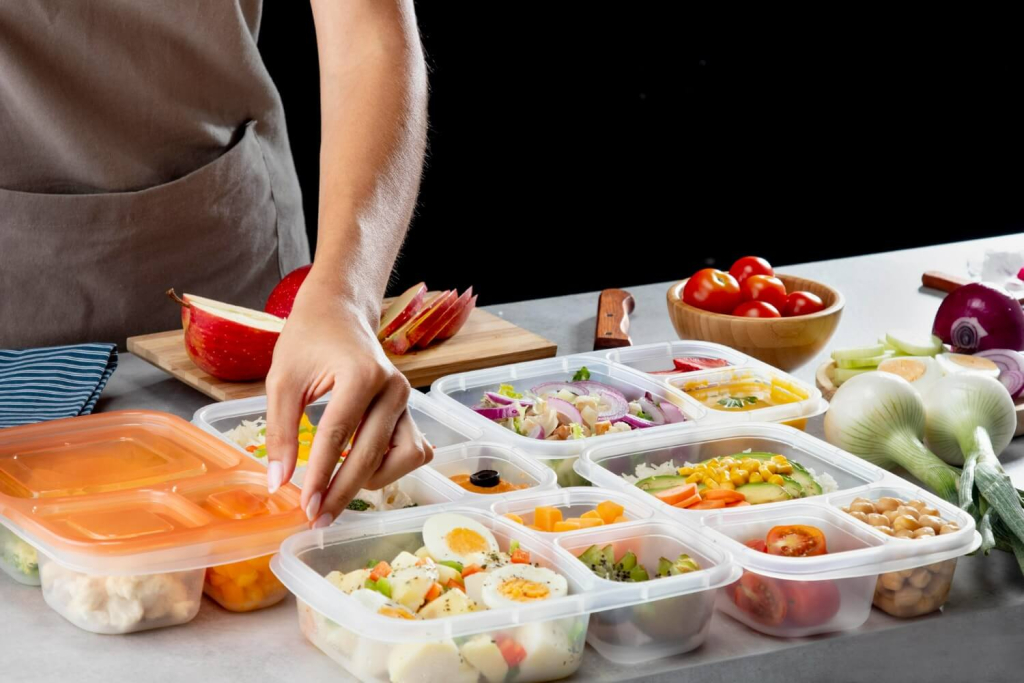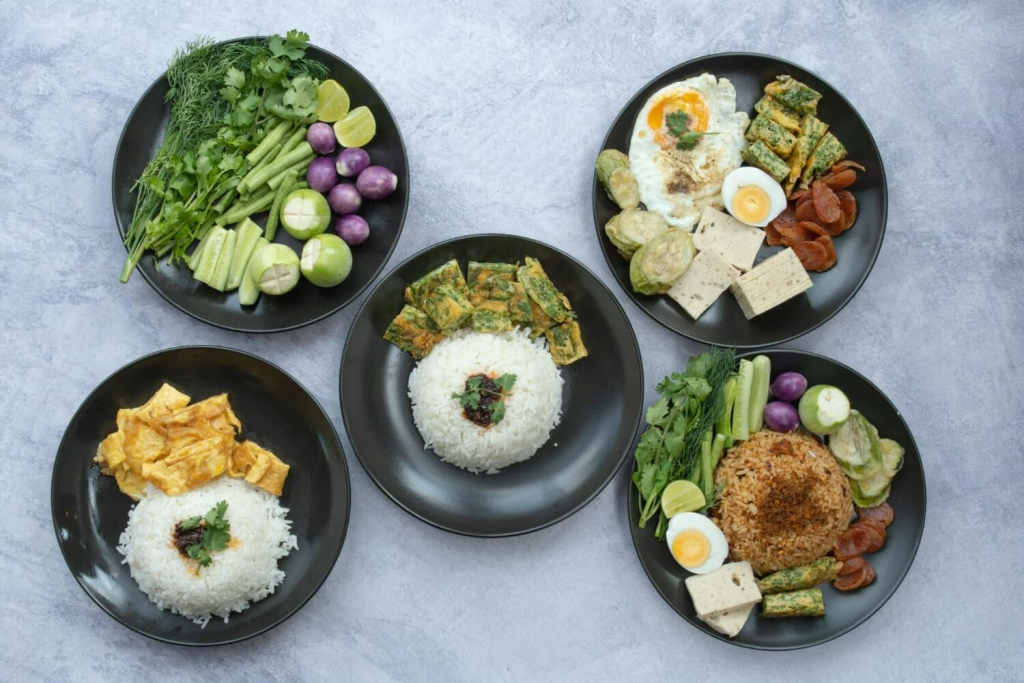
Photo source: Freepik
Simple Solutions for Busy Weeknights
Filipino households are familiar with the chaotic weeknights. Parents arrive home tired, kids are restless after school or soccer practice, and everyone is waiting for dinner to appear on the table. Without a plan, the default solution often becomes a quick run to the nearest fast food chain or ordering delivery.
That might feel convenient in the moment, but it slowly eats away at the family budget and introduces more unhealthy choices than anyone really wants. This is why we’re giving you all the tips you may need on smart meal planning for your family.
What Meal Plans Do
When families commit to smart meal planning, the results go far beyond deciding what to cook. Meal plans create order, cut waste, and bring consistency to family meals, while also strengthening the connection between budgeting and everyday routines. By looking at both the financial and household benefits, it’s easier to see why meal planning is worth the effort.

Meal Plans as a Financial Roadmap
Meal plans work like a map for the week ahead. Instead of asking “What’s for dinner?” every night, families already know the answer. That certainty reduces stress and keeps everyone aligned. More importantly, meal plans are directly linked to financial control. When every recipe is accounted for, the grocery list becomes exact. Families buy only what they need, in amounts they will actually use. The result is less food waste and fewer unplanned trips to the store which often lead to overspending.
Building Meaningful Family Mealtime
Family mealtime also becomes more meaningful with planning. Instead of chaotic nights where everyone grabs what they can, the table turns into a consistent space where family members sit down together. Even if it’s just thirty minutes, that routine stabilizes the household. And because recipes are chosen in advance, parents can include healthier options—green salad on the side of grilled fish, or a bowl of nutritious soup—without the pressure of last-minute decisions. Smart meal planning for families creates predictability that benefits both the wallet and the stomach.

Building a Grocery List That Actually Works in the Philippines
Every effective meal planning process begins with a grocery list, but not all lists are created equal. In the Philippines, where families juggle between supermarket runs and trips to the palengke, a working grocery list needs to blend practicality with flexibility.
- Rice and Proteins
Rice remains a staple, but it should be written down in exact amounts based on weekly consumption. The same goes for versatile proteins like chicken, eggs, and canned tuna. By thinking about how each ingredient will be used across several recipes, families avoid buying items that end up spoiling. - Frozen Foods & Frozen Vegetables
Frozen foods and frozen vegetables deserve a spot on that list as well. Many still believe fresh produce is always superior, but frozen alternatives often retain nutrients and reduce spoilage risk, making them budget-friendly. A bag of frozen mixed veggies tossed into sinigang or nilaga instantly increases nutritional value and saves prep time. Families that rely only on “fresh from the palengke” produce often end up throwing away wilted veggies after a few days. Mixing both fresh and frozen options ensures variety while helping parents save money on wasted food. - Filipino Household Must-Haves
A thoughtful grocery list, designed around actual menus, transforms into a financial tool that prevents overspending and supports consistent cooking. Soy sauce and vinegar for adobo, tomato sauce for pasta dishes, and malunggay leaves that can be frozen and added to tinola or munggo. Cheese, though often seen as a treat, can be stretched into several dishes from macaroni soup to baked pasta, making it cost-effective.

Tips to Stick to a Budget While You Prep Ahead and Plan Meals
A major reason families struggle with meal planning is the belief that it is expensive or time-consuming. In reality, the opposite is true when you prep ahead.
Cooking in Larger Batches
Cooking in larger batches allows families to save both time and money. For example, preparing a big pot of chicken adobo on Sunday not only covers Sunday dinner but can also provide a packed lunch for Monday and even leftover adobo flakes for a snack. The same principle applies to sinigang or giniling—cook once, eat several times.
Rotating Proteins
Budget-friendly strategies also mean rotating proteins to avoid overspending. Eggs, munggo, and canned tuna can step in when meat prices spike. Serving munggo with malunggay leaves on Fridays, for instance, gives the family a protein-rich, budget-friendly dinner without compromising nutrition. By alternating pricier proteins with affordable ones, the weekly food budget remains balanced. Families also need to be honest about what the kids actually eat. Buying vegetables that consistently return untouched on the plate only wastes money. Better to focus on a mix of reliable family favorites and one or two new foods each week, keeping meals both predictable and exploratory.

Do the Prep Work Ahead of Time
Meal prep can also be divided into small steps. On weekends, chop onions and garlic, portion rice for the freezer, or marinate chicken for later in the week. Even thirty minutes of advance work creates easier weeknights. Families that dedicate short windows of time to meal prep find that weeknight dinners stop feeling like battles against the clock. Instead, they simply reheat, assemble, and serve. That small shift reduces the urge to rely on fast food, keeping both the family’s diet and budget on track.
Cooking That Fits Filipino Families
One of the many benefits of Filipino cuisine is its natural adaptability to smart meal planning. Dishes like adobo, tinola, and giniling are designed to be cooked in larger quantities and enjoyed across multiple meals.
Filipino Classics That Work Well as Leftovers
Adobo, in particular, improves in flavor after a night in the fridge, making it perfect for leftovers that don’t feel repetitive. Tinola can be stretched with frozen vegetables or fresh malunggay leaves, while giniling easily hides extra veggies that kids might otherwise avoid. These recipes are inherently quick and easy once prepped, which makes them ideal for families managing both school schedules and late-night work shifts.

Easy Dinners for the Busiest Nights
A well-designed plan also includes easy dinners for nights when time is especially tight. Think of pasta dishes topped with tomato sauce and cheese, tacos filled with shredded chicken or leftover adobo flakes, or arroz caldo that doubles as both dinner and breakfast the next day. These meals are nourishing, satisfying, and aligned with Filipino tastes, while still being simple enough to prepare after a long day. Having two or three of these easy dinners on the weekly menu ensures there is always a backup option that can be pulled together without stress.
Teaching Kids About Healthy Eating Through Mealtime
Meal planning also provides subtle ways to guide children toward healthy eating. By consistently offering balanced plates—protein, rice, veggies, and sometimes salads—parents model what nutritious meals look like. Kids are more likely to accept green salad or fresh veggies when they are part of the routine, rather than occasional add-ons. The message is not forced but gently repeated until it becomes normal. In this sense, meal planning influences not only what children eat today but also how they will cook and plan for their own families in the future.
Tools That Make Meal Prep Easier
Meal prep is not just about chopping ingredients ahead of time; it’s also about using tools that reduce daily stress.
The Slow Cooker as a Weeknight Lifesaver
The slow cooker, for example, has become a quiet hero in Filipino kitchens. Imagine placing chicken, soy sauce, vinegar, garlic, and bay leaves in the pot before leaving for work. By the time the family returns home, dinner is ready, warm, and waiting on the table. The slow cooker transforms cooking into a background task, freeing parents to spend more time with kids after school or at soccer practice.
Freezer Storage and Quick Meal Solutions
Other families swear by freezer containers and stackable lunch boxes. Pre-portioned meals allow anyone in the household to grab lunch for school or work without fuss. Freezing leftover sinigang, cooked pasta, or even a green salad base (without dressing) ensures food is not wasted. Frozen vegetables, such as corn, peas, or carrots, can be added directly into soups or stir-fries with zero extra prep. The result is quick and easy meals that fit into even the busiest schedules.
Organized Meal Prep for Less Waste and More Savings
Even something as simple as labeling containers can save time and money. Families who clearly mark dates on their frozen foods avoid the common mistake of throwing out food because no one remembers when it was cooked. Organized meal prep is about creating small habits that eliminate unnecessary decisions later.

Structuring the Week for the Whole Family
Smart meal planning for families isn’t just about dinner—it’s about building a rhythm.
Breakfast That Starts the Day Right
To maximize the many benefits of meal planning, parents need to think beyond dinner. Breakfast sets the tone for the day. A protein-packed breakfast burrito, filled with eggs, cheese, and a few fresh veggies, can be prepped ahead and frozen. On rushed mornings, simply heat and serve. This option not only helps the family eat well but also saves money by preventing convenience-store splurges. Filipino classics like champorado or pan de sal with peanut butter can also be included in the plan, as long as they are balanced with protein-rich items like eggs or canned tuna.
Lunch That Makes Leftovers Work Harder
Lunch is often overlooked, yet it plays a major role in ensuring kids and adults alike eat consistently nutritious meals. Packing leftovers is one of the smartest, budget-friendly approaches. Yesterday’s chicken adobo becomes today’s adobo flakes topping for rice, or last night’s pasta transforms into a cold pasta salad for school. By treating leftovers as intentional rather than accidental, parents reduce waste while ensuring variety.
Dinner as the Family Anchor
Dinner remains the anchor of the family schedule. It is the meal most likely to gather everyone at the table, reinforcing family mealtime rituals. Whether it’s tacos on Tuesday, pasta night on Wednesday, or chicken tinola on Friday, having a predictable rhythm allows the family to anticipate meals with excitement. Even when soccer practice runs late, a slow cooker meal can ensure dinner is served without delay. When planning meals this way, parents are no longer scrambling—they are simply following a system.

Small Items That Make a Big Difference
- Snacks
Snacks are often overlooked in the meal planning process, yet they influence both budget and health. Homemade banana bread or empanadas baked on weekends can serve as budget-friendly snacks throughout the week. These choices prevent overspending on convenience store food and keep the diet balanced. - Soups
Soups also deserve attention. A hearty chicken sopas or a light vegetable soup can stretch across several meals. By cooking one big pot, families enjoy quick reheats on busy nights. Soup is also an effective way to introduce new foods to kids—adding malunggay, squash, or carrots makes the dish colorful and nutritious without overwhelming picky eaters. - Salads
Salads, too, should not be underestimated. While not always central to Filipino dining, salads can be customized to local tastes. A green salad with fresh tomatoes, cucumbers, and cheese, paired with grilled chicken, creates a refreshing counterbalance to heavier rice-based meals. Salads are also a good use of leftovers—yesterday’s roasted chicken or grilled pork can be shredded into a nutritious lunch salad the next day. Having several salads across the week adds variety without raising costs.
The Long-Term Benefits of Meal Planning for Families
Smart meal planning for families doesn’t just solve tonight’s dinner—it reshapes routines, budgets, and even traditions. When families commit to a system, the impact shows up in both everyday savings and long-lasting cultural connections that shape how the household lives and eats.
Practical Benefits That Add Up
The benefits of meal planning extend far beyond the dinner table. At the most practical level, families notice that they spend less money, waste less food, and eat more consistent, healthy meals. On a deeper level, however, meal planning reshapes how the family experiences daily life. Dinner is no longer a stress point but a comforting ritual. Sports practice, homework, and late work shifts no longer threaten mealtime, because the system has already accounted for them.
Cultural and Emotional Rewards
There are also cultural benefits. In Filipino households, where sharing food is deeply tied to identity, having reliable family dinners reinforces bonds. Even simple meals like chicken tinola, pasta with cheese, or tacos become family favorites that kids remember years later. These routines weave memories into everyday life. Meal planning does not erase spontaneity—it creates space for it, because the essentials are already secured.
Freedom Through Structure
Perhaps the greatest reward is freedom. Families who once felt trapped by endless decisions suddenly have structure. They can experiment with new foods without worrying about blowing the budget or spend weekends exploring life outside the kitchen instead of scrambling to figure out meals. Meal planning is not just about recipes; it is about designing a household rhythm that balances nourishment, cost, and connection.

Conclusion: Building a Life Around the Table
For Filipino households navigating busy schedules and tight budgets, the choice is clear: meal planning transforms both the dinner plate and the household itself. With a bit of prep ahead, families unlock not just easy dinners but also long-term financial and emotional security. The many benefits of meal planning ripple outward—into healthier diets, stronger bonds, and a more sustainable way of living.
In the end, smart meal planning is not about strict control but about freedom. It gives families the structure they need to thrive while leaving room for joy, creativity, and the kind of mealtime memories that last a lifetime.

Celebrate Life’s Milestones in Camella!
Make unforgettable memories in a Camella home.
Our communities are designed to elevate your living experience.


